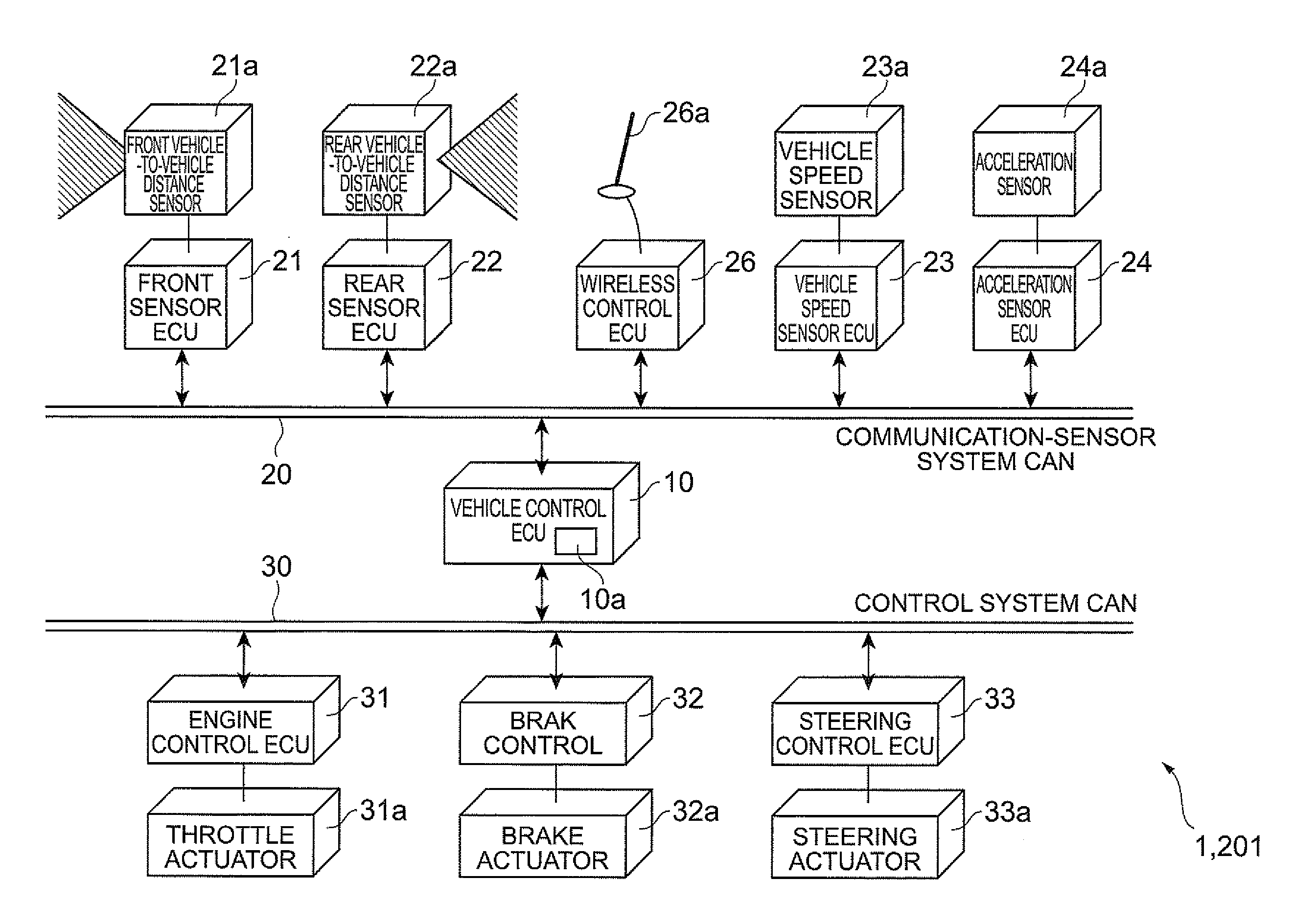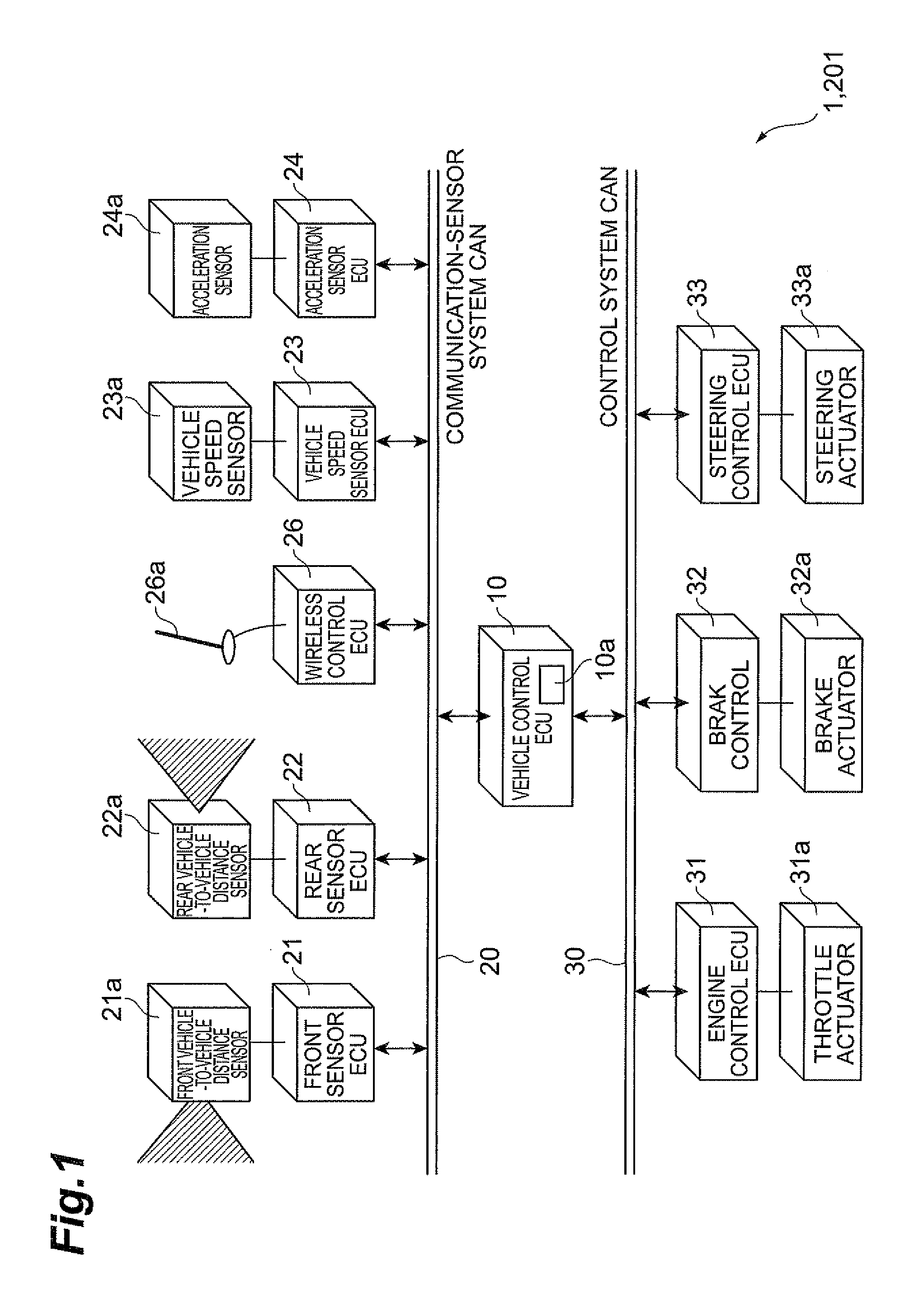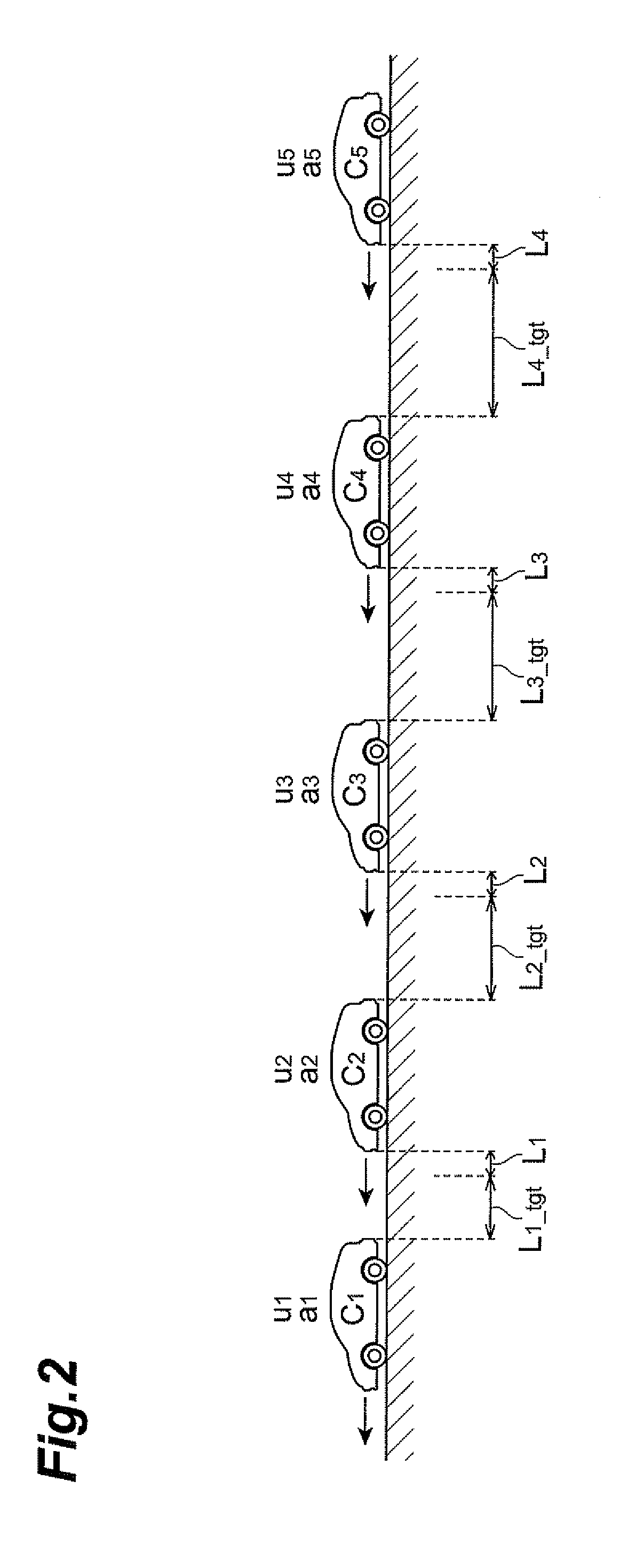Row-running control system and vehicle
- Summary
- Abstract
- Description
- Claims
- Application Information
AI Technical Summary
Benefits of technology
Problems solved by technology
Method used
Image
Examples
first embodiment
[0020]A vehicle platooning control system 1 shown in FIG. 1 is a system that controls each running state of a plurality of vehicles so that the plurality of vehicles runs in a row. By adopting the vehicle platooning control system 1, row-running may be realized in which the plurality of vehicles runs in a row with a comparatively narrow vehicle-to-vehicle distance. In the vehicle platooning control system 1, row-running of an arbitrary number of vehicles may be realized. However, here, as shown in FIG. 2, a case will be exemplified in which five vehicles C1, C2, C3, C4, and C5 run in a row.
[0021]Furthermore, in the description below, if necessary, as shown in FIG. 2, the acceleration of a vehicle Cn at n-th (n=1, 2, . . . , 5) from a foremost vehicle is denoted by “an”, the speed of the vehicle Cn is denoted by “Vn”, and the acceleration instruction value of the vehicle Cn is denoted by “un”. Further, the target vehicle-to-vehicle distance between the vehicle Cn and the vehicle Cn+1...
second embodiment
[0041]Next, a second embodiment of the vehicle platooning control system according to the invention will be described. Since the physical configuration of a vehicle platooning control system 201 of the embodiment is the same as that of the vehicle platooning control system 1 as shown in FIG. 1, the repetitive description thereof will be omitted.
[0042]As described above, in this kind of row-running, since the vehicle-to-vehicle error propagation ratio S is dependent on the acceleration frequency of the vehicle, there is an acceleration frequency of the vehicle making the vehicle-to-vehicle error propagation ratio S as S>1. For example, in the example of FIG. 3, the frequency around 6·10−2 Hz corresponds thereto. Likewise, the acceleration frequency of the vehicle making the vehicle-to-vehicle error propagation ratio S as S>1 will be referred to as an “inappropriate frequency”. As described above, when the foremost vehicle C1 increases or decreases speed with the appropriate frequency...
PUM
 Login to View More
Login to View More Abstract
Description
Claims
Application Information
 Login to View More
Login to View More - R&D
- Intellectual Property
- Life Sciences
- Materials
- Tech Scout
- Unparalleled Data Quality
- Higher Quality Content
- 60% Fewer Hallucinations
Browse by: Latest US Patents, China's latest patents, Technical Efficacy Thesaurus, Application Domain, Technology Topic, Popular Technical Reports.
© 2025 PatSnap. All rights reserved.Legal|Privacy policy|Modern Slavery Act Transparency Statement|Sitemap|About US| Contact US: help@patsnap.com



